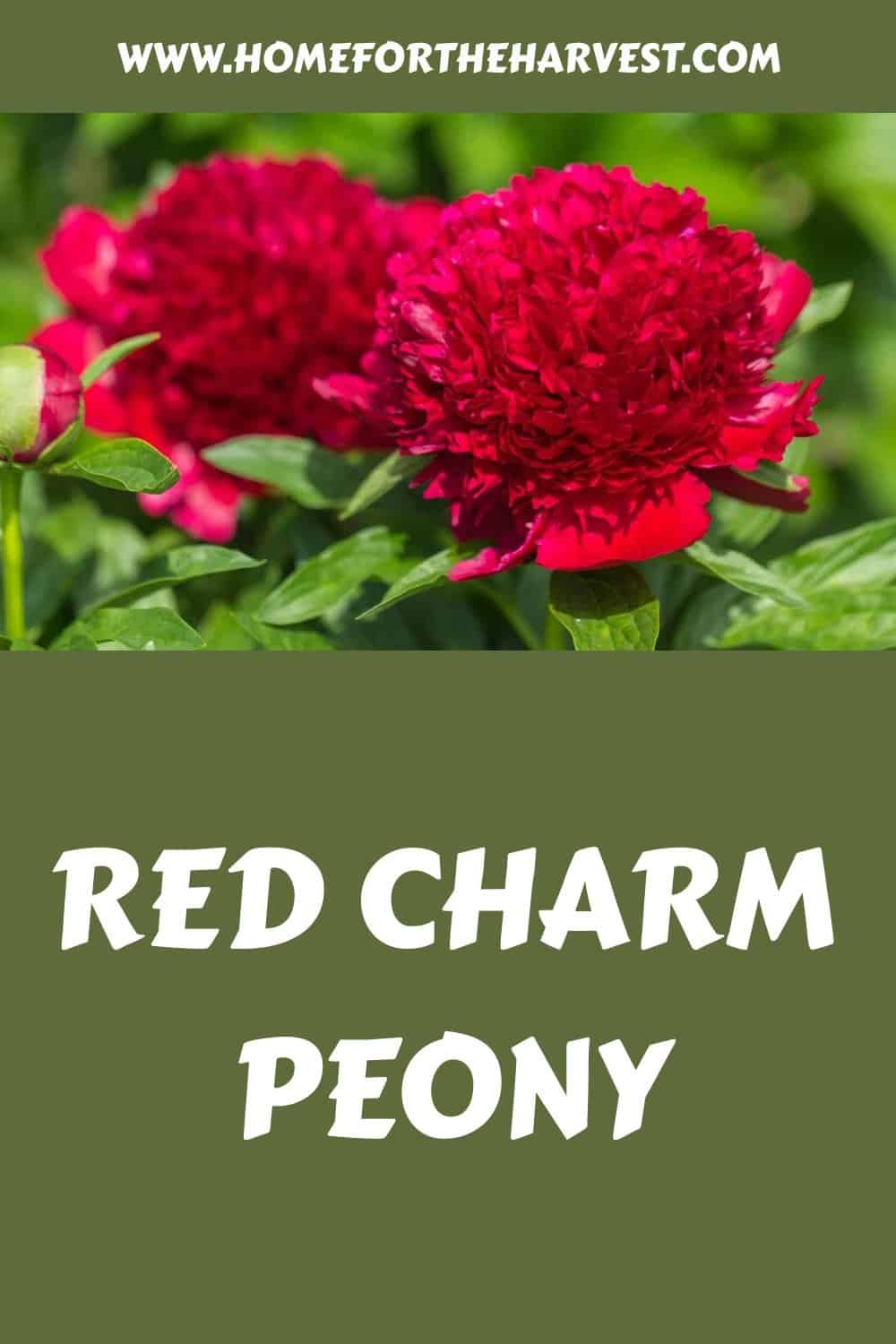Red Charm peony is an herbaceous peony variety with deep-red, fully bombe-type blooms. The flowers are gigantic, reaching 9″ wide each on mature plants. The red blooms also have a spicy old-rose fragrance. Plants grow about 32″ tall and 32″-36″ wide, with strong stems to hold up the large flowers in full sun. The Red Charm peony is a hybrid Paeonia cultivar bred by Lyman Glasscock of Illinois (USA) in 1944.
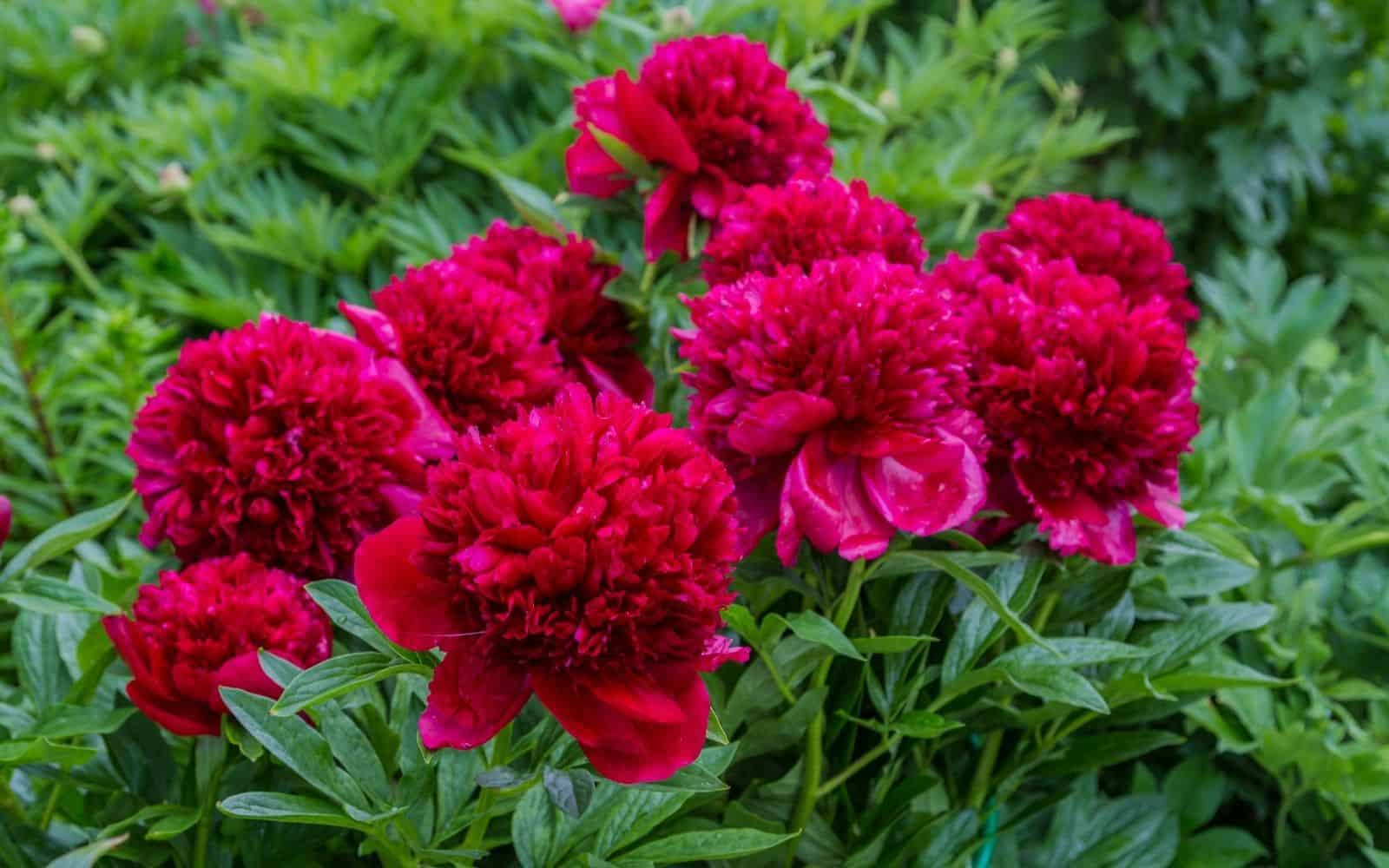
Red Charm peony basics
Paeonia ‘Red Charm’ was bred by Lyman D. Glasscock of Elmwood, Illinois, who introduced over 75 different peony cultivars over his career. Introduced to the public in 1944, this cultivar is a hybrid officinalis x lactiflora type with bombe-type red flowers. The Red Charm peony received the American Peony Society’s Gold Medal in 1956.
The flowers of the Red Charm peony are very large, reaching 9″ across during peak bloom on mature plants. This peony is a good example of a “bombe” type peony – one that has multiple layers of petals to form that classic puffball shape. Other popular bombe peonies include Raspberry Sundae peony and Sorbet peony.
These red peonies have stiff, strong woody stems. The foliage is a glossy green color and remains ornamental after the peonies are finished blooming. Red Charm plants grow to be about 32″ tall overall.
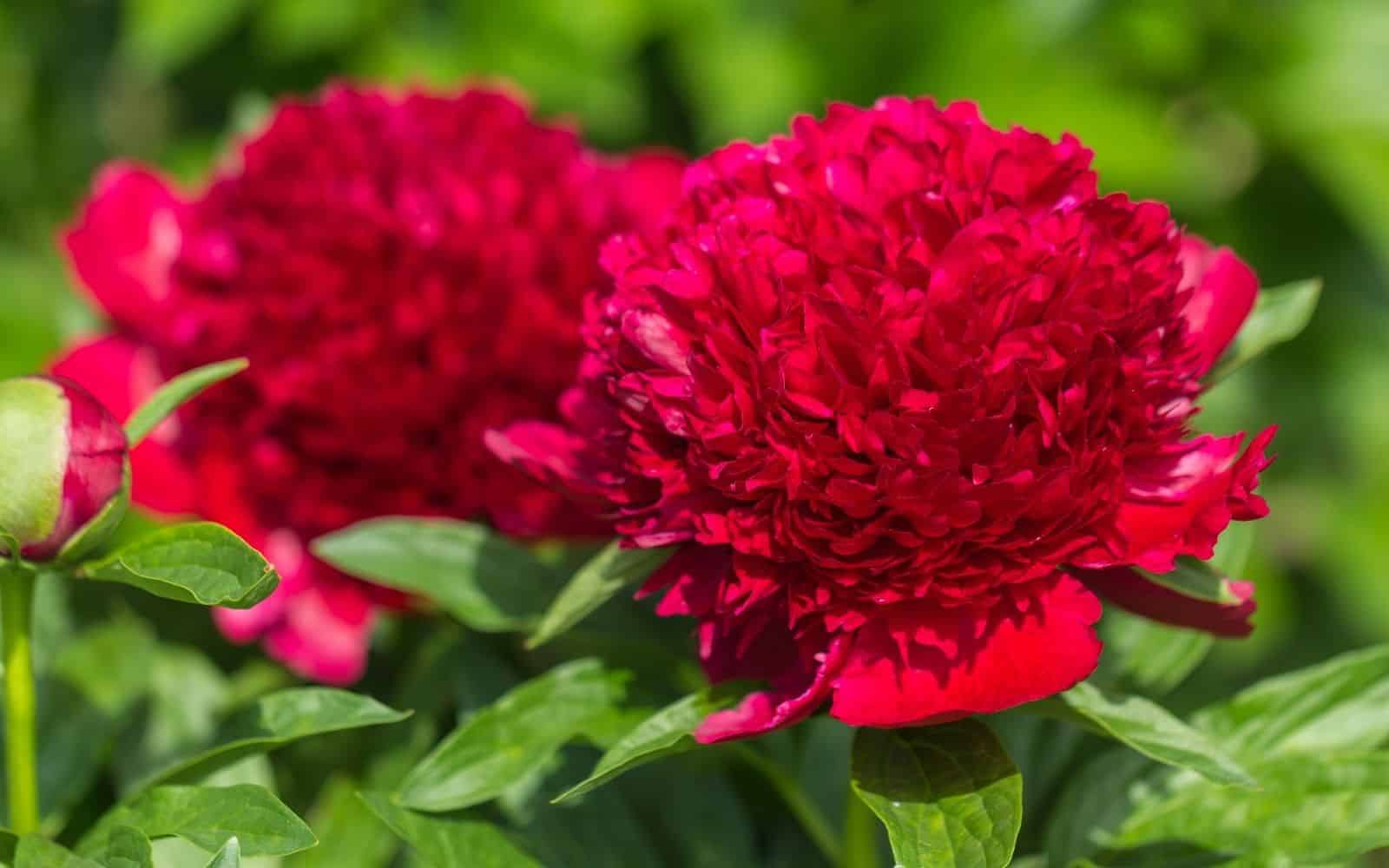
Classification
Red Charm peonies (Paeonia ‘Red Charm’) are herbaceous perennial peonies with bombe-type deep red peony flowers that bloom early in peony season (early-mid spring).
Bombe is one of the six main types of peony flower forms (along with single, anemone, Japanese, semi-double, and full double.) Bombe-type peonies like Red Charm are a special type of double peony in which the inner petals form a dense ball that appears to be sitting on a saucer made of the wider outer guard petals creating the illusion of double flowers.
Red Charm plants are herbaceous peonies. These types of plants plants sprout anew from their roots each spring and will typically grow to be about 3 feet tall by the middle of spring. Then, they will bloom and go on to display beautiful foliage throughout summer and even into early fall. They usually die back to their roots after the first hard frost comes and the ground freezes.
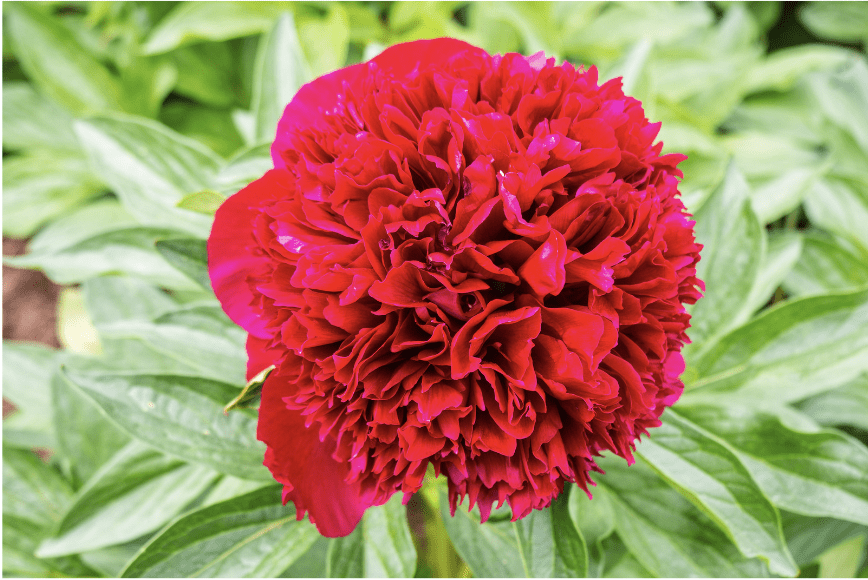

Planting a Red Charm peony
When you plant a bare root of a Red Charm peony, do it early on in the fall season if possible. You can plant it during the early spring, but you may not see the blossoms bloom until the next spring, depending on how the plant does. Peonies do not do well when they have been moved, so choose the planting spot carefully. You want to plant them in an area with full sun and well-drained fertile soil.
When you plant a bare root of a Red Charm peonies, dig a hole that is about twice as wide as the root but not terribly deep. While digging the planting hole, soak the peony root in clean water to hydrate it before planting. Peony roots can be soaked for 20 minutes – 4 hours, depending on how dry they are.
Place the Red Charm peony root in the hole, ensuring that the creamy-pink “eyes” (the flower buds) face upwards towards the sky. The eyes should be about 1 inch below the soil surface. Planting the eyes more than 2 inches deep can reduce or even preclude blooming altogether.
Backfill the hole with the soil that came out and cover the root up with dirt. Make sure to pack the loamy soil tightly around the roots, but do so gently so you do not harm them in any way. Water the newly planted peonies deeply after planting.
Peonies are not only sold as bare roots. Red Charm is a common enough variety that potted starter plants should be available in the spring at local plant nurseries. If your peony comes potted in a plastic nursery pot, here is a detailed article all about how to plant potted peonies out into the garden. Like the bare root peonies, take care not to plant potted peonies too deep.
Plant Red Charm peonies about 3 feet away from each other, although you can plant them further apart if space allows. A spacing distance of 4 feet is ideal in terms of air circulation around the plants to keep fungal disease at bay. The roots need plenty of room to spread without running into any other roots to grow and thrive. Peonies do not do well when they have to compete for nutrients with other plants and flowers.
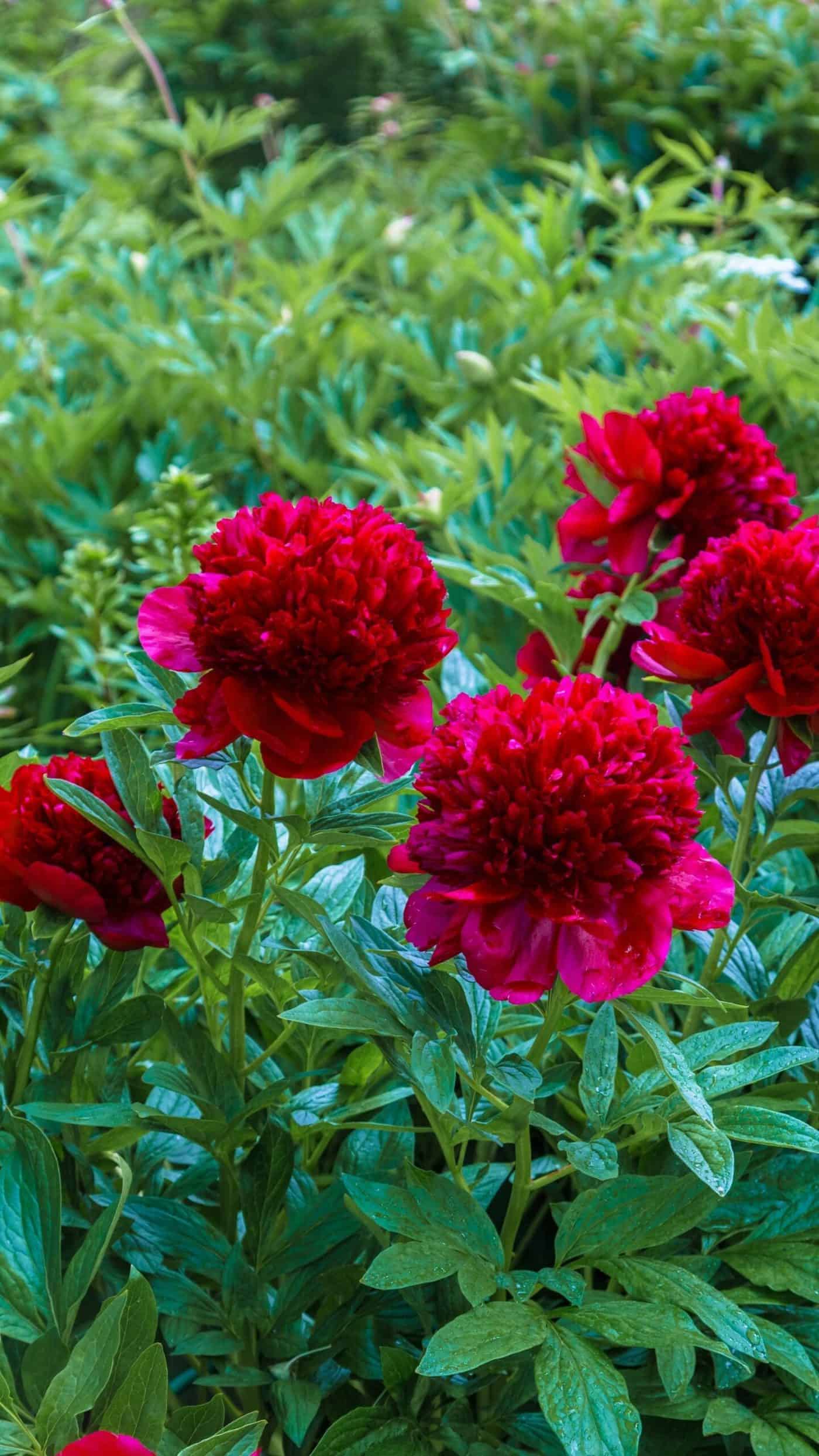
Supporting peonies in flower
Red Charm peonies do sometimes need support, especially when the large blossoms are in full bloom. You should add support to the Red Charm peonies that are in your garden early on in the spring after the soil surface has become soft again. If you add support to these red peonies, they will grow and thrive, and the blossoms will not droop toward the ground.
Use stakes or peony support rings. Place the peony support rings underneath the blossoms before they bloom to keep them from drooping to the ground. The peony plant can be gently fastened to a stake or held up with the peony support ring, so with careful placement, you will not be able to see them soon after you place them. Many types of peony rings are dark green and blend in well with the garden, although they may affect the displayed shape of the plant.
Peony plant pests
Here are some of the most commonly observed garden pests and how they can affect peony plants:
- Ants: Commonly found on peony buds, attracted to the nectar. Generally they are not a problem and may help keep other pests down.
- Thrips: Tiny insects that cause damage by sucking plant juices.
- Aphids: Small, sap-sucking pests that can lead to distorted growth.
- Peony leaf weevils: Small beetles that create distinctive notched edges on peony leaves as they feed.
- Japanese beetles: Known for eating peony flowers and leaves.
- Scale insects: These pests attach to stems and leaves, feeding on sap.
- Spider mites: Tiny mites causing yellowing and stippling on leaves.
- Slugs and snails: Chew on young peony shoots and foliage.
- Rabbits: May eat young shoots and buds of peonies.
Peony plant diseases
Here are the most common diseases that affect peony plants (including Red Charm):
- Botrytis blight (Fungal): Causes brown, wilted buds and blackened stems.
- Peony wilt (Fungal): Leads to wilted, discolored foliage and stems.
- Leaf blotch (Fungal): Identified by red or purple spots on leaves and stems.
- Powdery mildew (Fungal): Characterized by white, powdery coating on leaves and stems.
- Root rot (Fungal): Caused by overly wet soil, leading to wilting and yellowing leaves.
- Peony ringspot virus (Viral): Causes ring-shaped or line-patterned spots on leaves.
- Peony mosaic virus (Viral): Displays as mottled or distorted leaves with no specific pattern.
- Crown rot (Bacterial/Fungal): Results in rotting at the base of the stem, often fatal to the plant.
- Phytophthora blight (Fungal): Similar to Botrytis blight but affects the plant base and roots.
- Verticillium wilt (Fungal): Leads to yellowing and wilting of leaves, often starting at the base.


